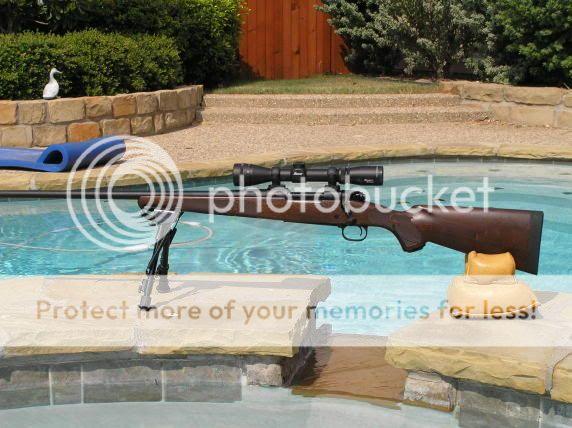Jeff In TX
Well-Known Member
[ QUOTE ]
Factory barrels are a waste to spend any of that time.
[/ QUOTE ]
Roll-Yur-Own,
Not always so and with a as little as $75.00 some can be made tack drivers. I bought a Left-handed Winchester Model 70 Featherweight in 300 WSM. BTW my new nick name for this rifle is the "Mule". Can anyone guess why?
Anyhow, it would put the first two rounds in about an inch at 100 yards and throw the third shot left by 2 or 3 inches. After shooting custom guns for the last 10 years I was having a hard time accepting that type of accuracy. This was after I glass bedded the action and the first 1" of the barrel and spent $40.00 on a crisp 2 pound trigger job.
I sent the rifle to my favorite gunsmith to hand lap the factory barrel hoping that would work and I would avoid an expensive re-barrel job. My smith charged me $30.00 to hand lap the barrel.
He said the barrel was typical factory and had a lot of rough patches, but said it lapped out well. Now it was off to the range. Once I got it sighted I shot a 3-group just to see what it would do. It put the 3-shots in a nice .667" group @ 100 yards. After a couple of hours of shooting other rifles I gave it another 3-shot group. This one measured .710" @ 100 yards. BTW I was shooting Fed Premium 180 gr Barnes Triple shock factory ammo.
For a 7.5 pound lightweight hunting rifle with scope, that's alright with me. For less than $75.00 it's a hell of a good shooting hunting rifle.

Factory barrels are a waste to spend any of that time.
[/ QUOTE ]
Roll-Yur-Own,
Not always so and with a as little as $75.00 some can be made tack drivers. I bought a Left-handed Winchester Model 70 Featherweight in 300 WSM. BTW my new nick name for this rifle is the "Mule". Can anyone guess why?
Anyhow, it would put the first two rounds in about an inch at 100 yards and throw the third shot left by 2 or 3 inches. After shooting custom guns for the last 10 years I was having a hard time accepting that type of accuracy. This was after I glass bedded the action and the first 1" of the barrel and spent $40.00 on a crisp 2 pound trigger job.
I sent the rifle to my favorite gunsmith to hand lap the factory barrel hoping that would work and I would avoid an expensive re-barrel job. My smith charged me $30.00 to hand lap the barrel.
He said the barrel was typical factory and had a lot of rough patches, but said it lapped out well. Now it was off to the range. Once I got it sighted I shot a 3-group just to see what it would do. It put the 3-shots in a nice .667" group @ 100 yards. After a couple of hours of shooting other rifles I gave it another 3-shot group. This one measured .710" @ 100 yards. BTW I was shooting Fed Premium 180 gr Barnes Triple shock factory ammo.
For a 7.5 pound lightweight hunting rifle with scope, that's alright with me. For less than $75.00 it's a hell of a good shooting hunting rifle.

